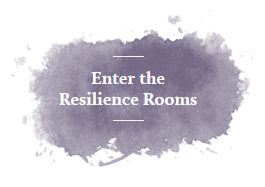In today’s world we have easy access to most things. It’s not surprising that kids may feel entitled and assume that they can easily get what they want, thus cultivating gratitude becomes even more important. Studies on gratitude prove its positive impact on many levels. A study suggests that grateful adolescents are happier, more optimistic, have better social support, are more satisfied with their school, community, friends, and themselves, and give emotional support to others.[i] Another study reveals that teens who are more grateful are more satisfied with their lives, look to better their communities, are more engaged in their schoolwork and hobbies, have higher grades, and are less envious, depressed, and materialistic.[ii]
Gratitude is a mindset and lifestyle. These lessons can be taught throughout a child’s development and should be carried out consistently and continually.
Some lessons include:
* Assessing how grateful you personally are – You can’t teach and foster gratitude unless you embody and practice it yourself. Test your level of gratitude by taking this quiz on “How grateful are you? https://greatergood.berkeley.edu/quizzes/take_quiz/gratitude. Understand “What good is gratitude?” See Dr. Robert Emmons YouTube video explaining the benefits of gratitude: https://youtu.be/aRV8AhCntXc. Explore what gets in the way of gratitude: https://greatergood.berkeley.edu/article/item/what_stops_gratitude, and watch the 20 best Ted Talks & videos on the power of gratitude: https://positivepsychologyprogram.com/gratitude-ted-talks-videos/
* Modeling gratefulness – Children learn and mimic the behavior of their parents. If it expected that children exemplify compassion and care they must observe that type of behavior from their parents to others and from their parents to them personally.
Express gratitude to your child when he/she does something worthy of appreciation. Particularly note their thoughtfulness toward you and others. They’ll learn that there’s more to life than superficiality and material items. Also, express gratitude toward others (your partner, another family member, or anyone who has assisted you) so they’ll be able to observe how to carry it out.
* Naming what they’re thankful for and why – Don’t limit this during their birthday, Thanksgiving, or during holiday time. It could be a question your child answers daily. For example, you can ask, “What is the nicest thing that someone said and did for you today, and why did you feel grateful for it?” or “What do you feel grateful today about yourself, and why?”
* Earning something they want – Tame the “gimmes.” Be mindful about distinguishing between things that your child wants as opposed to things that he/she needs. Have your child save up their allowance, birthday or holiday gifts, and fund what he/she wants. Your child will gain more perspective on the value of money and what you and others generously give to him/her.
* Sending written thank you cards or speaking directly to others to express a thank you – Speaking to someone directly and sending out a letter of gratitude is beneficial to teach these lessons. Kids most often follow through after receiving birthday or holiday gifts. Expand this to anyone that was particularly kind to your child such as his/her teacher, coach, pediatrician or adolescent medicine physician, barber or hairdresser, bus driver, etc.
* Facilitating acts of kindness and generosity toward others – Acts of kindness and care should be an ongoing activity carried out by children on a daily/weekly basis. Going to a charity function once a year or once every six months is not enough to teach these core values. Otherwise children identify or link the charity happening at a certain time or event. For example, if every Christmas/Chanukah a family goes to a soup kitchen to help out, children view Christmas/Chanukah as a distinct time of helping and do not necessarily transfer the need to help at other times/occasions.
* Facilitating acts of kindness and generosity toward others – Acts of kindness and care should be an ongoing activity carried out by children on a daily/weekly basis. Going to a charity function once a year or once every six months is not enough to teach these core values. Otherwise children identify or link the charity happening at a certain time or event. For example, if every Christmas/Chanukah a family goes to a soup kitchen to help out, children view Christmas/Chanukah as a distinct time of helping and do not necessarily transfer the need to help at other times/occasions.
Facilitate that your child engages in volunteer or charitable activities. Empower your child to select causes that he/she personally feels passionate toward or can relate to. This will vary from child to child based on his/her interests, passions, and developmental age. This will enable your child to feel that he/she made the choice and will have a personal investment in achieving his/her selected charitable goals. Actively involving kids instills increased motivation, dedication, and desire to help.
* Teaching the value of being empathetic and gracious – Make it a point to discuss with your child how he/she feels about various interactions, actions, and circumstances that they are confronted with. Also ask them to think about how another person may feel. Suggest that your child “puts them-self in another person’s shoes.” If he/she is not able to get there independently, make connections for them so that they can internalize how what they say and do makes an incredible impact on others (both for the positive and negative).
With gaining compassion for other individuals it helps to also foster self-compassion and the ability to be sensitive, caring, and compassionate toward one’s self. Your child will be better able to appreciate and have gratitude for human frailty, vulnerability, and our basic human needs.
* Expanding your child’s thinking so it’s more open and flexible – Many kids have inherent negative and rigid thinking. They may see things unilaterally and tend to notice what is negative about things and situations. Their thoughts and feelings may be negatively based as well. This stream of negativity will make it less likely that your child will be able to tap into feelings of gratitude.
Initiate perspective taking so that your child has different, more expansive, and hopeful ways of looking at things. A way to direct this thinking is to ask, “How else can you see this?” If he/she doesn’t readily see it, offer them the various perspectives.
* Coaching on how to give and receive compliments and positive sentiments – We may be reluctant to express gratitude or accept a gracious sentiment directed at us. It may evoke feelings of embarrassment or fear that if we’re accepting of it than we’ll be rejected or come across as self-serving, overly confident, or “full of our self.” It also lends to vulnerability in a relationship because we’re making our self emotionally open and accessible.
Teach your child and role play with them how to express graciousness and how to receive it. For example, ask your child what he/she would say to someone who got a new haircut they liked or made a good shot during their basketball game, and how he/she would respond if someone complimented them on theirs.
Gratitude is not only something nice to cultivate in our children, it’s also central to their health, happiness, and well-being. As parents there are fundamental ways that we can develop and lend to our children’s compassion and care. It’s up to us to instill gratitude as a mindset and lifestyle.
[i] Froh, J. J., Sefick, W. J., & Emmons, R. A. (2008). Counting blessings in early adolescents: An experimental study of gratitude and subjective well-being Journal of School Psychology, 46(2), 213–233. https://doi.org/10.1016/j.jsp.2007.03.005.
[ii] Froh, J. J., Fan, J., Emmons, R. A., Bono, G., et al. (2011). Measuring gratitude in youth: Assessing the psychometric properties of adult gratitude scales in children and adolescents. Psychological Assessment, 23(2), 311–324. DOI: 10.1037/a0021590.
Blog published via Huffington Post.



